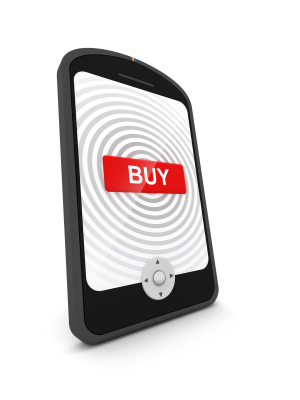What's Fancy About Same-Day Delivery? 3 E-commerce Trends Worth Watching
 TechCrunch today talks about how social commerce site Fancy is rolling out same-day delivery in 100 cities around the world:
TechCrunch today talks about how social commerce site Fancy is rolling out same-day delivery in 100 cities around the world:
“Social commerce platform Fancy, a startup that was a shoppable Pinterest before Pinterest itself became shoppable, has now added support for same-day delivery within its mobile application and website, allowing shoppers to order things they find to receive them on the same day by 5 PM.”
Now, I’ve talked about Fancy before (then known at “The Fancy”) and think they’re onto something cool here (though, to be fair, so are all the AGFAM players of Apple, Google, Facebook, Amazon, and Microsoft, plus eBay, Walmart and others).
More importantly, it’s worth recognizing the trends that continue to converge:
- Speed. In this case, speed of delivery, but the emphasis remains on putting products in customers’ hands more quickly.
- Friciton-free commerce. When a customer sees something they crave, nothing should stand in the way of their purchase. Nothing. Mobile enables this streamlined purchasing, because it’s always at hand. But the actual device isn’t that important as long as it removes barriers to consumer action. The reason wearables will matter (though I’m not convinced they do yet), is that they have the potential to be even more “at hand” than a phone. Google Glass is anchored to your face. A watch is on your wrist. You won’t have to dig your phone out of your pocket or purse to take action and that will further reduce friction. And as mobile payment options improve, friction-free becomes the new normal.
- Social. Fancy relies on recommendations and reviews from their users to highlight things you might like.
Ratings, reviews and recommendations play a critical role in marketing your products and services. And, coupled with the focus on speed and friction-free commerce, provide a clear purchase path for consumers: See something you like, read about it on your mobile device or tablet, click “Buy Now,” pick it up in-store or find it waiting for you when you arrive home.
Obviously, there are potential downsides, such as increasing cost of sales if consumers choose to call with their mobile phone, instead of buying through a web/app channel. But that’s a manageable challenge (and, frankly, not the worst problem to have).
But where we end up is a world with no more e-commerce, m-commerce, or channel conflict. Instead, just shopping.
Pretty fancy, indeed.
If you’re interested in learning more about the future of e-commerce and marketing via the social, local, mobile web, register to receive a special report I’ve produced in conjunction with hotel marketing firm Vizergy, “Digital Hotel Marketing in a Multiscreen World.” While it’s targeted specifically at hotel and resort marketers, the lessons apply to just about any business. You can get your free copy of the report here.
You might also enjoy some of our past coverage of the social, local, mobile web and what it means for your business, including:
- 3 Key Trends for 2013
- 2013 trends: It’s all e-commerce (Small Business E-commerce Link Digest)
- Why E-commerce Keeps Growing. And Why it Still Will. Thinks Out Loud Episode 39
- The Zen of Digital Marketing Strategy
- Digital Marketing Strategy is About Information, Not Technology – Thinks Out Loud Episode 41
- The Myths of Mobile Marketing
- The future of real-world mobile commerce
- How to Take Charge of Your Distribution Strategy (Travel Tuesday)
- Is Amazon’s $1 billion in mobile sales enough to convince you?
- How Safe is Your Industry From Amazon?
- 4 Fundamental Truths About the Future of E-commerce
- What’s the Future of E-commerce? Look to the Past to Find Out

Comments (0)